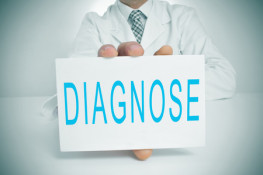How Patients and Physicians can Reduce Diagnostic Errors
11August2017
11August2017

The Institute of Medicine defines diagnostic error as the failure to establish an accurate and timely explanation of the patient’s health problem(s) or a failure to communicate that explanation to the patient. In essence, diagnostic errors occur when a diagnosis is missed completely, wrong or delayed.
Diagnostic errors are one of the leading causes of medical malpractice; they represent a significant healthcare patient safety issue. While medication errors often overshadow diagnostic errors in patient safety discussions, two studies of malpractice claims revealed that diagnostic errors far outnumber medication errors as a cause of claims lodged (26 percent compared to 12 percent in one study; 32 percent compared to eight percent in another study).
In order to make a plan to reduce them, patient safety advocates must understand why diagnostic errors occur. The first thing to be aware of is that most diagnostic errors occur in well-run medical facilities by qualified and conscientious health care providers.
The causes of diagnostic errors include:
The complexity of the diagnostic process. Making a diagnosis is complicated because there are over 10,000 known diseases and 5,000 laboratory tests but only a small number of symptoms. This means that any one symptom can have dozens or hundreds of possible causes. If a healthcare provider makes a mistake during any part of the diagnostic process – obtaining a complete medical history, conducting a thorough exam, ordering the right tests and interpreting the test correctly – a diagnostic error may occur.
The complexity of health care delivery. Health care delivery has many steps starting with diagnosis and testing. Most often, it is a breakdown in communication or coordinating care during the health care delivery process that causes a diagnostic error. When test results are misplaced, for example, a diagnosis may be delayed.
Cognitive errors. When a health care provider fails to identify or misinterprets a key finding in a test result or jumps to a conclusion without testing, a diagnostic error may occur.
Patients can help avoid diagnostic errors by becoming more knowledgeable about the diagnostic process and taking advantage of tools, like the ones discussed in this article about patient engagement. When patients become full partners in their own care, they can often catch diagnostic errors before they lead to serious harm or injury.
Physicians can help avoid diagnostic errors by better understanding the cognitive mistakes that are most likely to occur while navigating their health care systems and resources. They should take the time to think through symptoms and test results before making diagnoses, use decision support resources and make the patient a partner in the diagnostic process.
Patient surveys confirm that one in every three people has been the victim of a diagnostic error. Diagnostic errors make up the highest percentage of malpractice claims, cause the most serious injuries and provide the biggest total of penalty payouts. If you or a loved one was seriously injured because of a diagnostic error, contact an experienced medical malpractice attorney as soon as possible.
The Seattle personal injury attorneys at Morrow Kidman Tinker Macey-Cushman, PLLC have years of experience representing families harmed by medical malpractice. We seek justice for patients who have been harmed by preventable medical errors including birth injuries, hospital-acquired infections and wrongful death in Seattle and across Washington State. There are no fees or expenses to file a personal injury case as we only receive payment if we recover damages on your behalf. Do not delay; personal injury claims come with a Statute of Limitations, which means they must be filed within a certain time frame of the injury.
Call us now at (206) 752-4366 or contact us online to schedule a free consultation with one of our compassionate, experienced attorneys.